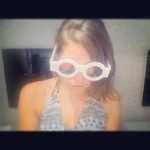Icelandic horses — though some would call them ponies, since their ancestors were such, and they are often quite small, like a pony — are beautiful and rugged and the envy of many equestrians worldwide.
Part of their charm is derived from their look, which is quite elven, and you could picture them playing a role in any Lord of the Rings-style movie you might care to mention. Their manes are untamed, their legs are short, and their proportions on the whole make them look adorable-yet-sturdy; perfect for this country, its climate, and its history.
Also renowned is the Icelandic horse’s many gaits — while most horses are limited to just three, this one has five (though some would say six, if they consider the ‘canter’ and ‘gallop’ to be separate movements, which they do not in Iceland).
The fourth gait (above and beyond the walk, trot, and canter/gallop) is known as the tölt, and is an at-birth ability to essentially walk very, very fast.
The fifth gait is missing from even some Icelandic horses, but those who have it are considered to be top-of-the-line examples of their breed. It allows them to achieve a so-called ‘flying pace,’ that looks to me like a super-quick (up to 30 mph) shuffle, and is meant to display the horse’s superior balance and pacing.
I’m told all of these horses nearly died off at one point in the 18th century, due to a massive volcanic eruption. Enough of them survived to maintain the breed, however, and to this day you can see them all across the countryside, in pastures and sometimes being ridden by professionals or tour groups. You’ll even see them clip-clopping around downtown Reykjavík on occasion, though seldom without some kind of special event as an excuse.
If you ask around, you’ll find that animals make different sounds in different countries. Some actually do have different pitches and tonalities (prairie dogs, for example, have different well-documented ‘accents’ from US region to US region), though most of the difference is in how the locals perceive the animal’s most-notable noise.
Many Icelandic animals make similar sounds to their international counterparts, but the horses are particularly different: here, they say “gobbity-gob.”
It took me a while to figure out that this sound is more a reflection of their hoof-beats than their mouth-noises, which my culture perceived as “neeeeiiiggghhhh.” That translation wouldn’t be terribly appropriate here, however, since in Icelandic ‘nay’ means ‘no,’ and nobody likes a negative nelly.
Filed Under
Other moments in Reykjavik
-
Iceland, Dreams, mountains
Dreaming in and on.
in Reykjavik, Iceland -
Folklore, Art, nature
Iceland Travels
in Reykjavik, Iceland -
Exploration, Art, Observation
Caught in the act.
in Reykjavik, Iceland -
Exploration, Travel
Welcome to 3 AM in Iceland in the summer, where the nighttime sun of Reykjavik awaits behind these curtains.
in Reykjavik, Iceland -
City walks, Exploration
#1: Find the highest point in the city.#2: Sketch walking plans.#3: Walk.
in Reykjavik, Iceland -
Food
Someday I'll stop eating meat completely. Until then: behold, the most glorious burger in Iceland!
in Reykjavik, Iceland -
Street Art, Art
Art as a public imperative.
in Reykjavik, Iceland -
Landscape
What is it about a mountain?
in Reykjavik, Iceland -
Newly sanded, cleaned and lacquered wooden floors. The new office space is shaping up nicely.
in Reykjavik, Iceland





